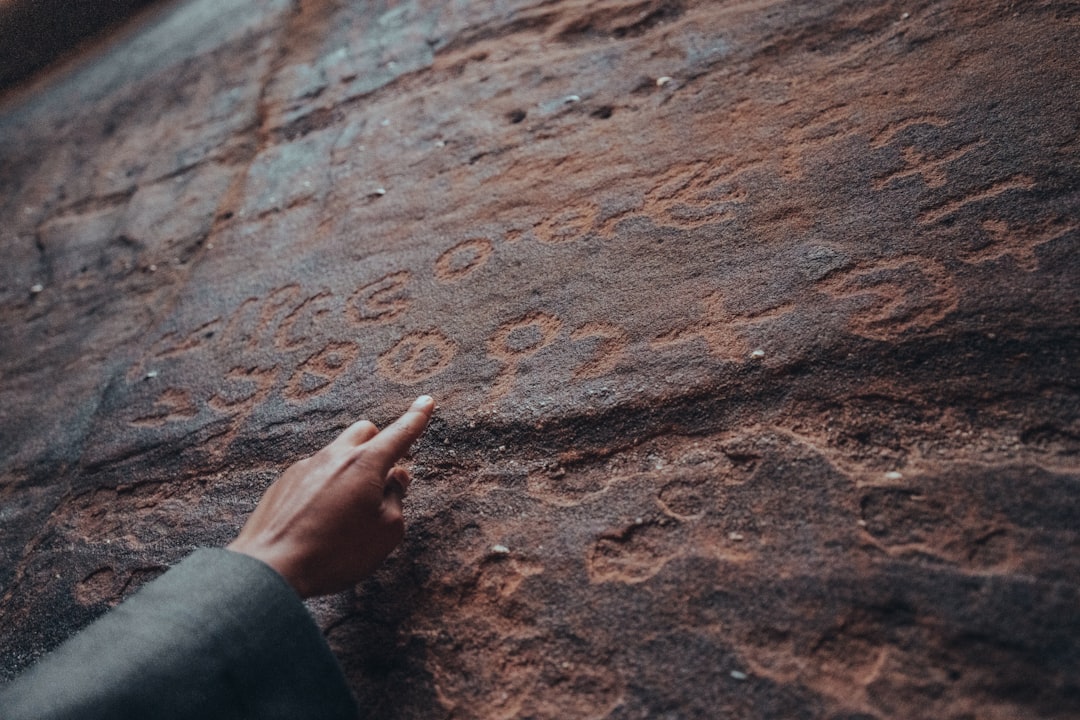For centuries, scholars and theologians have been searching for evidence of the original Bible manuscript, which is considered the foundation of Christianity. Despite extensive research and archaeological efforts, the existence of this ancient text remains a mystery. In this post, we explore the history of the Bible manuscripts, the challenges of validating authenticity, and the new discoveries that may offer fresh insights into the earliest known biblical texts. Keep reading to learn more.
Introduction to the Original Bible Manuscript

Have you ever wondered if the original Bible manuscript still exists? Many people throughout history have searched for this significant piece of history, but the truth is, we may never fully know. Nevertheless, the search for the original Bible manuscript has provided important insight into the early Christian era and the authenticity of biblical texts. Here are a few things to know about the original Bible manuscript:
-
The original Bible manuscript is the set of ancient texts that were written by the original authors of the Bible. These texts were written in biblical languages such as Hebrew, Aramaic, and Greek.
-
The history of the Bible manuscripts can be traced back to the earliest days of Christianity. Scholars believe that the original texts were written between the 8th and 2nd centuries BCE.
-
The search for the original Bible manuscript has been challenging for many reasons. For one, these manuscripts were written on perishable materials such as parchment, papyrus, and animal skins. Additionally, many manuscripts were lost or destroyed over time.
-
Despite these challenges, biblical research has made significant strides over the years, providing new discoveries and insights into the history of early Christianity. Advances in textual criticism and the preservation of ancient manuscripts have made it possible to study the original content of the Bible with greater accuracy than ever before.
-
Recently, there have been exciting new discoveries related to the original Bible manuscript. One such discovery is the Dead Sea Scrolls, which were found in the mid-20th century and contain early Jewish texts that help us to better understand the context of the Bible. These discoveries have been a game-changer for biblical scholars and continue to provide new insights today.
In conclusion, while the original Bible manuscript may never be fully uncovered, the search for it has led to significant progress in biblical studies and the preservation of ancient texts. As we continue to learn more about the history of Christianity, we can appreciate the significance of the original Bible manuscript and the role it played in shaping our understanding of the world today.

History of the Bible Manuscripts
As a person interested in Christianity, it is important to understand the history of the Bible manuscripts. The Bible has been translated into numerous languages and versions, which raises the question: is the original Bible still in existence?
The oldest Bible manuscripts that have been discovered date back to the first and second centuries AD. These manuscripts were written in ancient languages, such as Greek, Hebrew, and Aramaic. For many years, the Bible manuscripts had been primarily copied by scribes, which resulted in variations and errors in the texts. However, biblical scholars have been working for centuries to reconcile the different versions of the Bible to create a reliable and accurate translation of the original texts.
Throughout history, primitive writing materials, fires and natural disasters have caused the original texts to be destroyed. The oldest known Bible manuscript is the Codex Sinaiticus, written in the fourth century AD. The manuscript was discovered in the Monastery of St. Catherine in Egypt in the mid 19th century. The Codex Sinaiticus contains almost all of the New Testament and about half of the Old Testament, making it one of the most important biblical manuscripts.
In the 20th century, many more ancient texts were discovered. One such discovery was the Dead Sea Scrolls, which were found in the mid-20th century. The Dead Sea Scrolls contained fragments of the Hebrew Bible, dating back to the second century BC to the first century AD. The discovery of the Dead Sea Scrolls revolutionized the study of biblical texts and gave scholars a greater insight into the history and development of the Bible.
Despite these discoveries, there are still many challenges in validating the authenticity of ancient biblical manuscripts. For example, many fragments and manuscripts have been discovered in recent years that have been labeled as forgeries or hoaxes. It is important for scholars and experts to thoroughly examine and analyze any new discoveries to ensure their authenticity.
The history of the Bible manuscripts is a fascinating and complex topic that continues to be explored by biblical scholars. As new discoveries are made and new technology is developed, researchers will be able to better understand and interpret the original texts of the Bible. Understanding the history of the Bible manuscripts is an important step in appreciating the significance and impact of scripture in religion and history.
The Search for the Original Bible Manuscript
As a Christian, you may have heard the question, “Is the original Bible still in existence?” The search for the original Bible manuscript has been ongoing for centuries, and it continues to be an area of interest and controversy among biblical scholars and historians. In this section, we will explore the journey to uncover the truth about the original Bible manuscript.
History of the Bible Manuscripts
The Bible is made up of 66 books, written by approximately 40 different authors, over a period of 1,500 years. The manuscripts of the Bible were handwritten on papyrus, parchment, or vellum, which were made from animal skins. These manuscripts were copied by scribes, who would take great care to accurately reproduce the text. Over time, these copies were reproduced, and the original manuscripts were lost or destroyed.
The Search for the Original Bible Manuscript
Despite the loss of the original manuscripts, biblical scholars have been tirelessly searching for any remaining fragments or copies of the original texts. This search has been conducted through biblical research, historical documents, and archaeological excavations. The field of textual criticism emerged, which involves analyzing the various copies of the Bible to determine the original text.

Challenges in Validating Authenticity
One of the biggest challenges in determining the authenticity of the Bible manuscripts is the fact that many copies were made hundreds or even thousands of years after the original text was written. This raises questions about the accuracy and reliability of the copies. Additionally, there are many variations and differences between copies of the text, which can make it difficult to determine which text is the closest to the original.
New Discoveries on the Original Bible Manuscript
Despite the challenges, many significant discoveries have been made in recent years. In 1947, the Dead Sea Scrolls were discovered, which included fragments of every book in the Old Testament except for the book of Esther. These texts were written between the 2nd century BCE and the 1st century CE, making them some of the oldest known texts of the Hebrew Bible.
Other significant discoveries have been made through archaeological excavations, including the discovery of the ancient city of Ur, where Abraham was born, and the remains of the city of Jericho, which was destroyed by the Israelites during the conquest of Canaan.
The Significance of the Original Bible Manuscript
The search for the original Bible manuscript is not only important for historical accuracy, but it is also important for the authenticity of the Bible. The Bible is the foundation of Christianity, and the accuracy and reliability of the text are essential for the faith.
In conclusion, while the original Bible manuscript may never be found, the search for it continues to be an area of interest for biblical scholars and historians. Despite the challenges, significant discoveries have been made that shed light on the history and authenticity of the Bible. As Christians, we can take comfort in the fact that while the text may have been copied and translated many times over, the message and the truth remain unchanging.
Challenges in Validating Authenticity
When it comes to validating the authenticity of ancient manuscripts, including the original Bible manuscript, there are a few challenges that scholars face. One of the biggest challenges is determining the age of the manuscript itself. Because these texts were written on materials like papyrus and parchment, which are subject to decay over time, determining their actual age can be difficult.
« Understanding Prevenient Grace in Christian Theology
Understanding Usury in the Bible: The Meaning and Impact on Financial Ethics »
Additionally, there is the issue of translation. As the original Bible manuscript was written in ancient languages, such as Hebrew and Greek, the task of translation falls on scholars. This can lead to discrepancies in the interpretation of biblical texts and their original meaning.
Another challenge to authenticity is determining the original authorship of the texts. Many books of the Bible were written anonymously, which can lead to confusion about who actually wrote them. Even when authors are named, there is the question of whether the manuscript that exists today was actually written by that author or a later copyist.
Despite these challenges, scholars have devoted themselves to studying the Bible manuscripts in order to uncover their true origins. Through the methods of textual criticism and biblical archaeology, historians are able to piece together a better understanding of the ancient texts and their accuracy.
In recent years, new discoveries have shed light on the original Bible manuscript. The discovery of the Dead Sea Scrolls in the 1940s and 50s provided scholars with some of the earliest known copies of the Old Testament and helped to validate its historical accuracy.

The significance of the original Bible manuscript cannot be overstated. As the foundation of the Christian faith, it is important to understand the historical and cultural context in which the texts were written. While the challenges of authenticity are real, the work of scholars and archaeologists continues to provide new insights into the ancient biblical texts.
New Discoveries on the Original Bible Manuscript
As a lover of biblical research, delving into the search for the original bible manuscript is a fascinating journey. Over the years, numerous ancient texts and historical documents have been discovered and studied by biblical scholars to discover more about the authenticity of the bible. Thanks to their work, several new discoveries have come to light.
Here are some fascinating new discoveries on the original bible manuscript:
-
Dead Sea Scrolls: Discovered in 1947, these ancient manuscripts are a significant breakthrough in biblical archaeology. The scrolls consist of some of the earliest known biblical writings, including parts of the Old Testament. Experts believe that the Dead Sea Scrolls were written between the 2nd century BC and the 1st century AD.
-
Codex Vaticanus: This is an ancient Greek manuscript of the Bible that dates back to the mid-4th century AD. The manuscript has been well-preserved, and its contents include the entire Old and New Testaments. Codex Vaticanus is significant because it is one of the oldest known manuscripts of the Bible.
-
Codex Sinaiticus: This is another ancient manuscript that contains the entire Old and New Testaments. It is believed to have been written in the mid-4th century AD and was discovered at St. Catherine’s Monastery on the Sinai Peninsula in Egypt. The discovery of Codex Sinaiticus provided scholars with a glimpse into the early Christian church’s teachings.
-
The Aleppo Codex: This ancient manuscript is considered one of the most important texts in Jewish history. It was written in the 10th century AD and contains the entire Old Testament. The Aleppo Codex was well-preserved for centuries until riots in Syria in 1947 damaged it.
These discoveries have been crucial in shedding light on the authenticity of the bible. They have helped researchers better understand the original content, languages used, and translations over time. Moreover, through the use of textual criticism and other research methods, biblical scholars have been able to verify and ensure biblical texts’ historical accuracy.

It is important to note that validating the authenticity of the original bible manuscript is still a challenging task. Many ancient manuscripts and biblical artifacts are still being discovered, and religious and historical artifacts continue to be analyzed. However, these new discoveries bring us closer to understanding ancient writings and early manuscripts, especially when it comes to the Old and New Testaments.
In conclusion, the search for the original bible manuscript continues to be a fascinating journey for biblical scholars and researchers. These new discoveries have highlighted the importance of biblical preservation and ignited new research to uncover ancient scriptures’ truth. These artifacts have proven pivotal in educating us about ancient history and giving us insight into religious and cultural practices and beliefs.
The Significance of the Original Bible Manuscript
The original Bible manuscript holds a significant place in the Christian faith. As Christians, we believe that the Bible is the word of God, and the original manuscript serves as the foundation of our faith. The original manuscript contains the earliest record of the Bible’s content, and it carries a lot of cultural, historical, and religious value.
Today, we have various translations and versions of the Bible, but they are not identical to the original manuscript. The translations we use today are based on copies of the original manuscript, and while they are accurate, there may be slight differences in the wording or phrasing. The original manuscript represents the most accurate version of the Bible, and its preservation is crucial to understanding our religious history.
The original Bible manuscript holds important historical significance as well. The manuscript is an ancient text that paints a vivid picture of life during biblical times. It offers insights into the customs, beliefs, and practices of the people during that period, which helps us better understand the context of the events described in the Bible.

Additionally, the original manuscript serves as a testament to the authenticity and reliability of the Bible. The preservation of the original manuscript and its many copies demonstrates that the Bible has been passed down through generations with meticulous care. The fact that the manuscript has survived for thousands of years is proof of its importance to the people who have protected and preserved it over the centuries.
In conclusion, the original Bible manuscript holds great significance to the Christian faith and the broader world. It is a historical and religious artifact that represents the most accurate version of the Bible. Its preservation is vital to understanding our religious history and provides crucial context for interpreting the Bible’s events. The manuscript is an enduring testament to the authenticity and reliability of the Bible and its lasting impact on our world.












